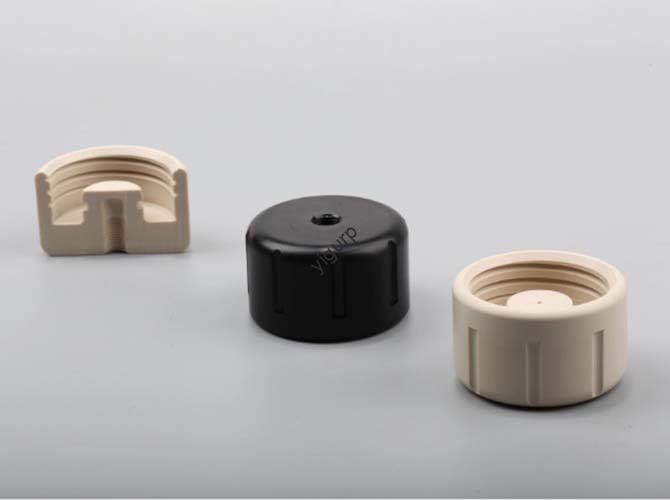No mundo da fabricação em ritmo acelerado de hoje, how can businesses turn complex design concepts into tangible, protótipos de alta qualidade rapidamente? The answer lies in 3D printing ultra-high precision prototypes. This technology is not just a trend—it’s a game-changer that solves long-standing challenges in prototype development, from material waste to design limitations. Abaixo, we break down its key components, Aplicações, and value for industries worldwide.
1. Core Advantages of Ultra-High Precision 3D Printed Prototypes
Why choose ultra-high precision 3D printing over traditional prototyping methods? The table below compares the two, highlighting clear benefits for users:
| Recurso | Prototipagem tradicional | Ultra-High Precision 3D Printing |
| Desperdício de material | Alto (até 30% of raw materials) | Baixo (≤5%, via precise material control) |
| Tempo de produção | 2–4 weeks for complex designs | 24–72 hours for same complexity |
| Flexibilidade do projeto | Limitado (hard to make intricate shapes) | Alto (supports micro-scale details) |
| Cost for Small Batches | Caro (tooling fees apply) | Acessível (no tooling required) |
| Precisão | ± 0,1 mm de tolerância | ± 0,01 mm de tolerância |
2. Key Materials Powering High-Precision Prototypes
O desempenho de 3D printing ultra-high precision prototypes depende muito da seleção de material. New innovations have expanded what’s possible—here are the top materials and their uses:
- Alumina Ceramics: Ideal for prototypes in high-temperature environments (Por exemplo, Peças automotivas do motor). It offers excellent durability and resistance to corrosion.
- 200°C Heat-Resistant Resins: Perfect for electronic prototypes, such as 5G RF device casings. They maintain shape and functionality even under continuous heat.
- Sustainable Composites: Made from recycled plastics or plant-based fibers, these materials reduce environmental impact while keeping precision intact—great for eco-conscious industries like consumer electronics.
3. Aplicações do setor: Solving Real-World Problems
Ultra-high precision 3D printed prototypes aren’t just for show—they solve critical issues in key sectors. Let’s look at three major use cases:
UM. Electronic Communications
In 5G device development, engineers need prototypes with micro-scale ports and signal channels. Traditional methods often fail to replicate these tiny details, leading to delayed testing. Com 3D printing ultra-high precision prototypes, companies like Huawei and Ericsson have cut 5G prototype development time by 40%, accelerating product launches.
B. Dispositivos médicos
Surgeons need custom implant prototypes (Por exemplo, Substituições do quadril) that match a patient’s anatomy exactly. Ultra-high precision 3D printing creates prototypes with ±0.02mm accuracy, allowing doctors to test fit and function before final production—reducing surgical risks by 25% (per a 2024 Estudo em The Lancet).
C. Microelectromechanical Systems (MEMS)
MEMS devices (like tiny sensors in smartphones) require prototypes with components smaller than a grain of sand. Ultra-high precision 3D printing is the only method that can produce these reliably, supporting innovations in IoT and wearables.
4. Addressing Common Challenges: What Users Ask
Many businesses hesitate to adopt 3D printing ultra-high precision prototypes due to perceived barriers. Here’s how to solve them:
- Desafio 1: Altos custos
Solução: While initial printers are expensive, small-batch prototyping costs 50% less than traditional methods. Por exemplo, a medical device prototype that once cost \(5,000 now costs \)2,500.
- Desafio 2: Operational Complexity
Solução: Modern software (Por exemplo, Autodesk Fusão 360) simplifies design-to-print workflows. Most teams can master basic operations within 1–2 weeks of training.
- Desafio 3: Opções de material limitado
Solução: Annual material innovations (Por exemplo, 2024’s launch of carbon-fiber reinforced resins) now cover 90% of industrial needs. Suppliers like Stratasys offer tailored material packages for specific industries.
5. Perspectiva da tecnologia YIGU
Na tecnologia Yigu, acreditamos 3D printing ultra-high precision prototypes is the cornerstone of next-gen manufacturing. Our team has supported clients in electronics and medical fields to cut prototype lead times by 50% ao melhorar a precisão. We’re investing in AI-driven software to further simplify operations—helping even small businesses access this technology. The future isn’t just about printing prototypes; it’s about printing solutions that solve real user problems.
Perguntas frequentes
- How long does it take to print an ultra-high precision prototype?
A maioria dos protótipos pequenos a médios (Por exemplo, a 5G sensor casing) take 24–72 hours. Larger or more complex designs (Por exemplo, a MEMS device) Pode levar de 5 a 7 dias.
- Can ultra-high precision 3D printed prototypes be used for final production?
Yes—for small batches (até 100 unidades). Para produção em massa, prototypes are used to test designs before switching to traditional methods (Por exemplo, moldagem por injeção).
- Is this technology environmentally friendly?
Absolutamente. It reduces material waste by 80% compared to traditional prototyping. When paired with sustainable materials (like recycled resins), it cuts carbon emissions by 30% por protótipo.
